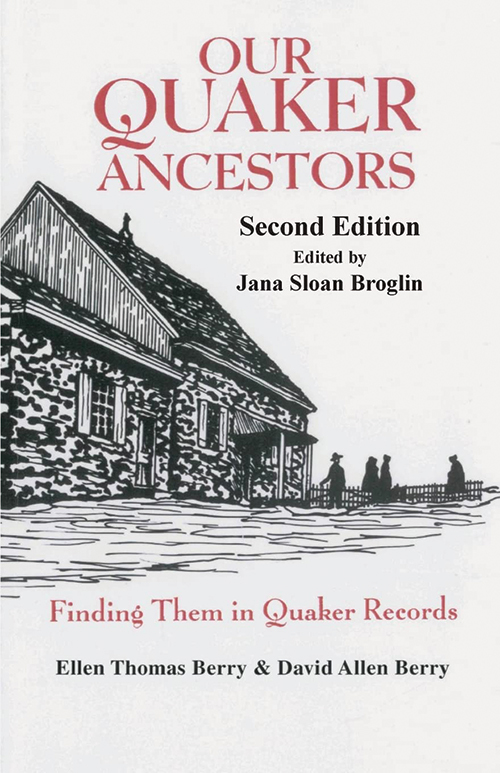
Our Quaker Ancestors: Finding Them in Quaker Records (Second Edition)
Reviewed by Thomas Hamm
February 1, 2023
By Ellen Thomas Berry and David Allen Berry, edited by Jana Sloan Broglin. Genealogical Publishing Company, 2022. 152 pages. $28.50/paperback.
Surveys show that genealogy is one of the most popular hobbies in the United States. (Full disclosure—I am an enthusiastic genealogist. In fact, that is how my wife and I met; we are fifth cousins twice removed.) Genealogists are inevitably pleased when they learn that they have Quaker ancestors. Extensive Quaker records, the generally good preservation of them, availability of reliable abstracts, and growing online access mean that sometimes one can trace ancestors back 300 years or more in an afternoon.
When Ellen Thomas Berry and David Allen Berry published the first edition of their book in 1986, microfilm was cutting-edge technology, and the World Wide Web hadn’t even been invented yet. Thus an updated edition of their book is appropriate.
This is a work aimed at genealogists who know little or nothing about Quakerism. The book opens with a brief introduction to Quaker history up to around 1850. As with any brief overview, scholars will find complex doctrines—such as the Inward Light—oversimplified. Chapters follow on Quaker organization, migration patterns, various types of monthly meeting records, and repositories. These are generally good, although occasionally misleading. For example, while correctly noting that sometimes yearly meetings took their names from the place where they held annual sessions—Philadelphia and Baltimore being prime examples—the authors go on to imply that other yearly meetings coincided with state boundaries. Friends will be aware that that seldom was or is the case. And the statement that monthly meetings traditionally were held on Saturdays is just plain wrong.
Occasionally some generalizations need more nuance. Two examples struck this reviewer: one concerns Quaker marriage certificates. The authors say correctly that one cannot assume that the witnesses who signed certificates were relatives. But research has shown that in some monthly meetings, especially in the Philadelphia area before 1850, it was customary for relatives of the bride and groom to sign their names in one of the columns below those of the bride and groom. This can be a useful clue. And while the authors are correct that “marriage contrary to discipline” in its most precise sense meant marrying another Friend outside of meeting, while “marriage out of unity” meant marriage to a non-Friend, it is clear to this reviewer that Friends did not always distinguish so precisely when making records of such “disorderly” marriages.
One of the limitations of any published reference book is that it becomes out-of-date immediately on publication. The authors and editor include repositories for original Quaker records and contact information, and it is generally accurate. But in some cases fact-finding failed. On page 86, people seeking original records of Indiana Yearly Meeting are directed to First Friends Meeting at Fifteenth and East Main Streets in Richmond, Ind. The records housed there were moved to Earlham College in 1984, and the meeting relocated to a new site a quarter of a century ago.
In short, this is an imperfect but still useful guide.
Thomas Hamm is professor of history and Quaker scholar in residence at Earlham College and a member of West Richmond (Ind.) Meeting. His most recent work is a two-volume edition of the eighteenth-century minutes of Dartmouth (Mass.) Meeting in New England Yearly Meeting, published by the Colonial Society of Massachusetts.



Comments on Friendsjournal.org may be used in the Forum of the print magazine and may be edited for length and clarity.